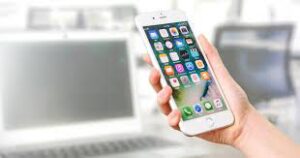Tired of constantly checking your phone? Instead of switching from device to device, simply forward those notifications to your computer. With Windows and macOS, you can put your phone out of arm’s reach and concentrate on your larger screen—without worrying that you’re missing out on dozens of missed calls and texts. This is also a great way to keep in touch with incoming alerts if you’re trying to avoid checking your phone at work.
Windows has become more and more phone-friendly over time, especially with Android devices. Unfortunately, the way Apple restricts access to iOS makes it difficult for anyone else to get into the notification system. On an iPhone, you can still do some cool tricks with Windows 10, such as sending web pages from one device to another, but you cannot sync notifications.
So we’ll focus on sending alerts from an Android to a device running Windows 11. Open the Start menu, click the settings cog, and choose Bluetooth & devices followed by Your Phone. Click Open Your Phone, which is a separate app that connects your handheld device to your PC, and click on Link new device.
The pop-up wizard will ask you to download the companion app Your PC on your Android phone, and when the download is complete, check the box next to I have the Your Phone Companion, and click on Pair with QR code. Use your phone to scan the code showing on your PC to give your phone access to your Microsoft account. On your phone, Android will ask you to grant the Windows app permissions such as access your contacts and location, and once you’ve done that, the link will be complete.
Once the connection is complete, you can set up Your Phone to show your phone notifications, messages, and calls on your PC, and even access your photos. Just select the item on the sidebar menu to the left of your computer screen and follow the instructions. For notifications and calls, Windows will ask you to do some extra work, like pairing your gadgets over Bluetooth or checking your phone and granting the corresponding permissions—just check the notifications and follow the instructions. You’ll also be able to control certain phone settings from your PC, like turning Bluetooth on and off, turning up the volume on your handheld device or enabling Do Not Disturb mode.
The latest iteration of Windows will also allow you to send links seamlessly between your gadgets. Just open the link on your mobile browser and share it with the Your Phone Companion app. Then, choose what device to share it with and it’ll automatically open on your computer. You can even dismiss phone notifications from your computer—just hit the X button next to it and it’ll disappear from both gadgets.You can even link multiple devices to Microsoft Windows, which you can review by going back to the Your Phone app. If at any point you want to cut the tie between your phone and computer, open the notification drawer on Android (slide one finger down from the top of the screen), and open the Connected to your PC notification by tapping the downward arrow on the left. There, the option to Disconnect will appear—tap it to sever the tether.
To get calls to show up on your Mac, make sure you’re signed into the same iCloud and FaceTime accounts on both devices and you’ve turned the WiFi on for both devices as well. On your iPhone, go to Settings, then Phone, then Calls on Other Devices, and turn on Allow Calls on Other Devices. Next, turn to your computer. Open up FaceTime on macOS and select Preferences from the FaceTime menu. Then click Settings and select the Calls from iPhone option. When your phone is nearby, plugged into the same WiFi network, you will be able to see incoming calls and even answer them from your computer.
To get SMS, MMS, and Message alerts on your Mac, again sign into iCloud with the same Apple ID on both your phone and your Mac. Next, open Settings on your iPhone, choose Messages, and hit Send & Receive. Make sure you’re using the right Apple ID, then tick both your phone number and email address. Head to Text Message Forwarding in the Messages menu and choose your Mac from the list. Finally, put down the iPhone and turn to your computer. On macOS, open up the Messages app, then choose Preferences from the Messages menu and click iMessage. Double-check the right Apple ID is in use, and then put a tick next to both your email address and your phone number. As with calls, you will be able to see alerts and respond to texts as well.
Source : https://www.popsci.com/send-phone-notifications-to-computer/







